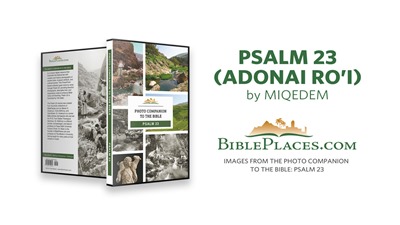A fragment of a monumental inscription discovered in Jerusalem may preserve the name of Hezekiah and a reference to a “pool.”
“Archaeologists in Israel discovered the base of a massive [limestone] Roman column [base] at the foot of Mount Hermon” during a salvage excavation in a Druze village.
Who needs pottery typology when you have archaeomagnetic dating? A new study by Israeli scientists and archaeologists argues that this new technique will provide secure dating for archaeological material previously difficult to date. This is especially useful for the Hallstat Plateau (800-400 BC) when radiocarbon techniques are less helpful. The TAU press release is here.
A one-minute film shot at the Jaffa Gate in 1897 has been restored and colorized with AI.
David Moster created a video showing Jews from around the world reading biblical Hebrew. Some of the readers were born in the 1800s.
Daily Bread has released a new 7-minute video, “Mt. Hermon: Getting God Completely Wrong by Mistake,” with Jack Beck.
Webinar on Nov 22 jointly sponsored by The Anglo-Israel Archaeological Society and British Friends of The Hebrew University: “Recent Advances in DNA Technology and Their Contribution to Archaeology in Israel.”
Christian Locatell, Chris McKinny, and Itzhaq Shai recently published an article on “The Tree of Life Motif, Late Bronze Canaanite Cult, and a Recently Discovered Krater from Tel Burna.” The article is available to subscribers to the Journal of the American Oriental Society or by purchase.
“In October 2022, the top three reports in biblical archaeology were about a stunning mosaic in Syria, a suspected synagogue at Chorazin, and a new geomagnetic study that affirmed biblical battles.”
After a writing hiatus, Israel’s Good Name returns with an illustrated post of the wetlands of the Poleg Marshes.
HT: Agade, Arne Halbakken, Alexander Schick
